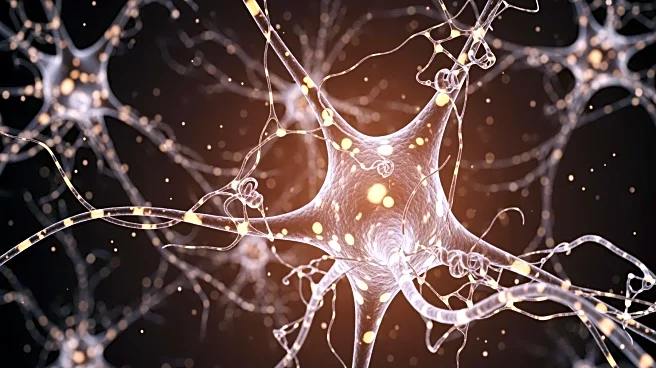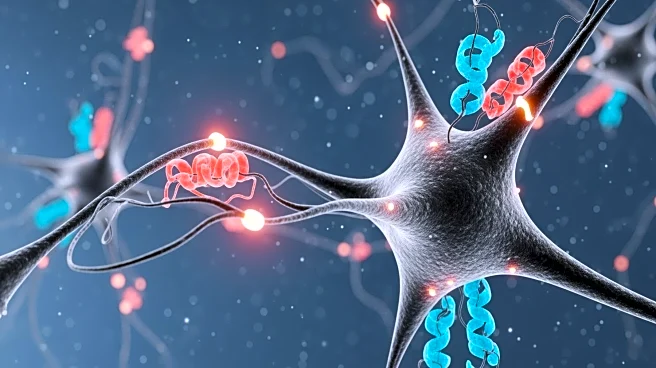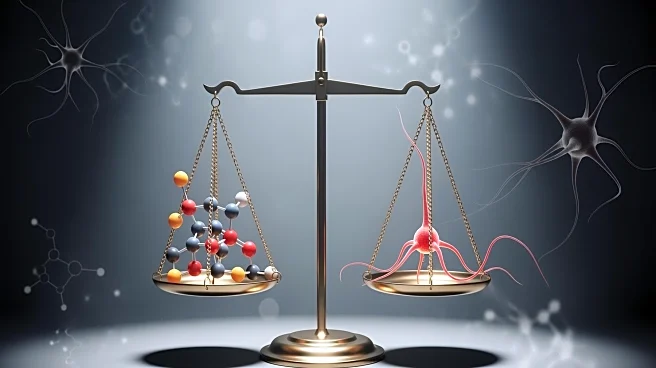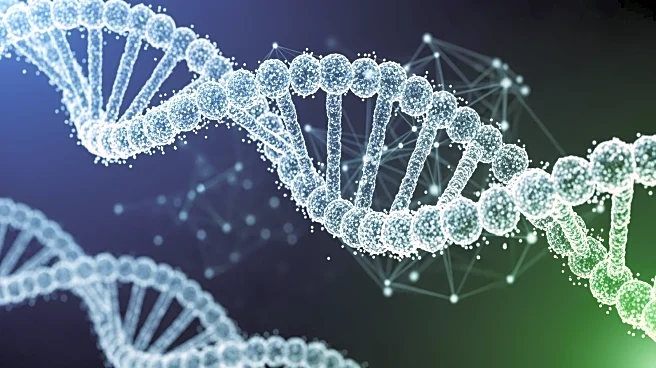What's Happening?
Recent research has revealed significant advancements in protein mapping within human cells, particularly focusing on the vulnerability of motor neurons in Amyotrophic Lateral Sclerosis (ALS). The study
utilized deep learning-based platforms like AlphaFold to predict protein structures, which were then applied to drug screening in endometrial cancer organoids. A key finding from the research is the intrinsically accelerated cellular degradation in ALS-vulnerable motor neurons, exacerbated by the loss of TDP-43 protein. This degradation is linked to the ubiquitin-proteasome system (UPS) and autophagic flux, which are more active in larger spinal motor neurons (SMNs) compared to other neuronal types. The study used zebrafish models to demonstrate that the loss of TDP-43 function accelerates autophagic flux, suggesting a potential therapeutic strategy by reducing degradation burden.
Why It's Important?
This research is crucial as it provides new insights into why ALS specifically targets motor neurons, particularly the larger SMNs. Understanding the mechanisms of cellular degradation and the role of TDP-43 in ALS can lead to the development of targeted therapies aimed at reducing the degradation burden in these neurons. This could potentially slow down the progression of ALS, offering hope for improved treatment options. The study also highlights the importance of protein mapping and deep learning technologies in advancing our understanding of complex diseases like ALS.
What's Next?
Future research may focus on developing therapeutic strategies that target the degradation pathways identified in this study. There is potential for clinical trials to test drugs that can modulate autophagic flux and UPS activity in ALS patients. Additionally, further exploration of the role of TDP-43 in other neurodegenerative diseases could provide broader insights into neuronal vulnerability and protection.
Beyond the Headlines
The study raises ethical considerations regarding the use of genetic models like zebrafish in research and the implications of manipulating protein degradation pathways. There is also a cultural dimension in terms of how society perceives and supports research into neurodegenerative diseases, which often receive less attention compared to other medical conditions.











